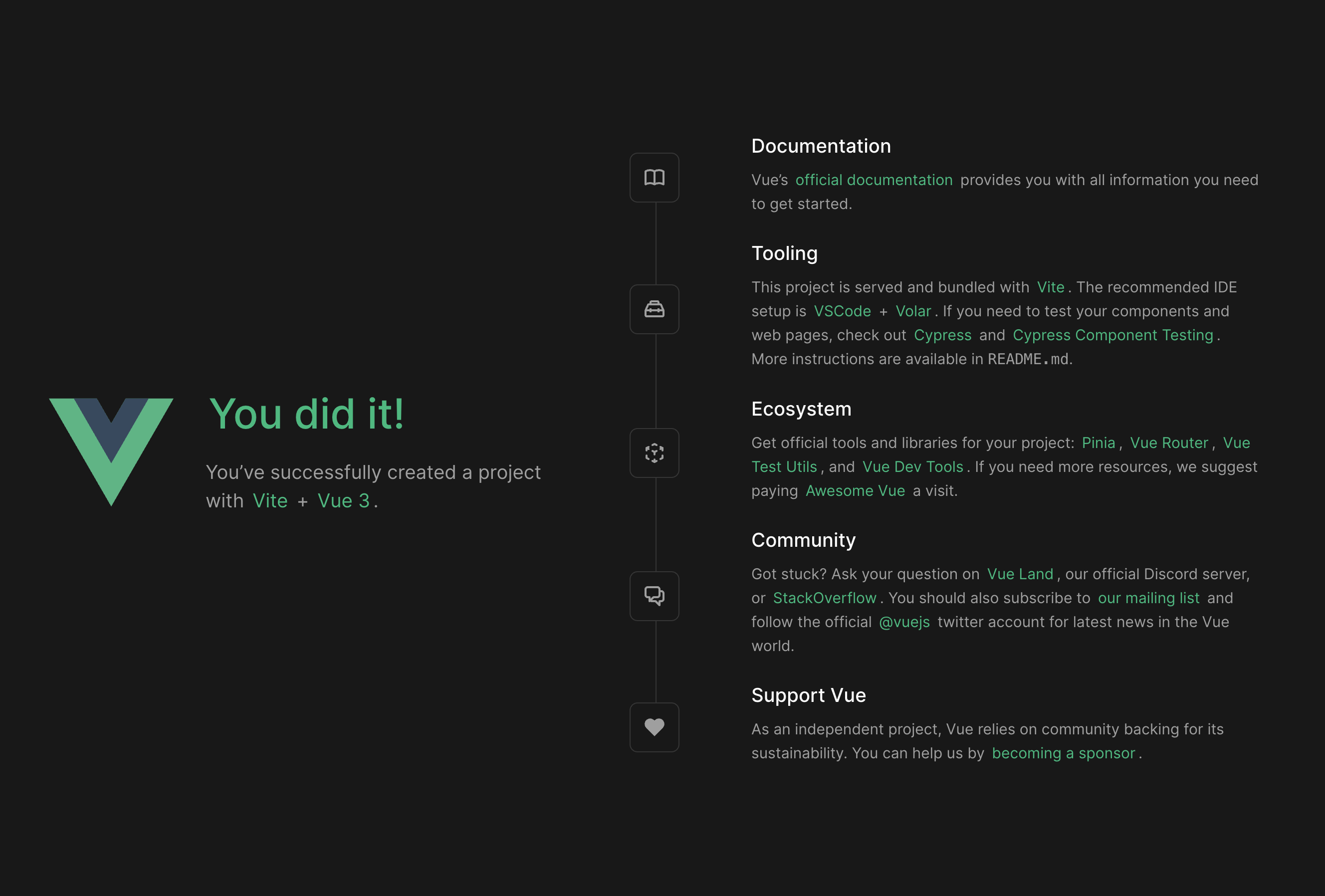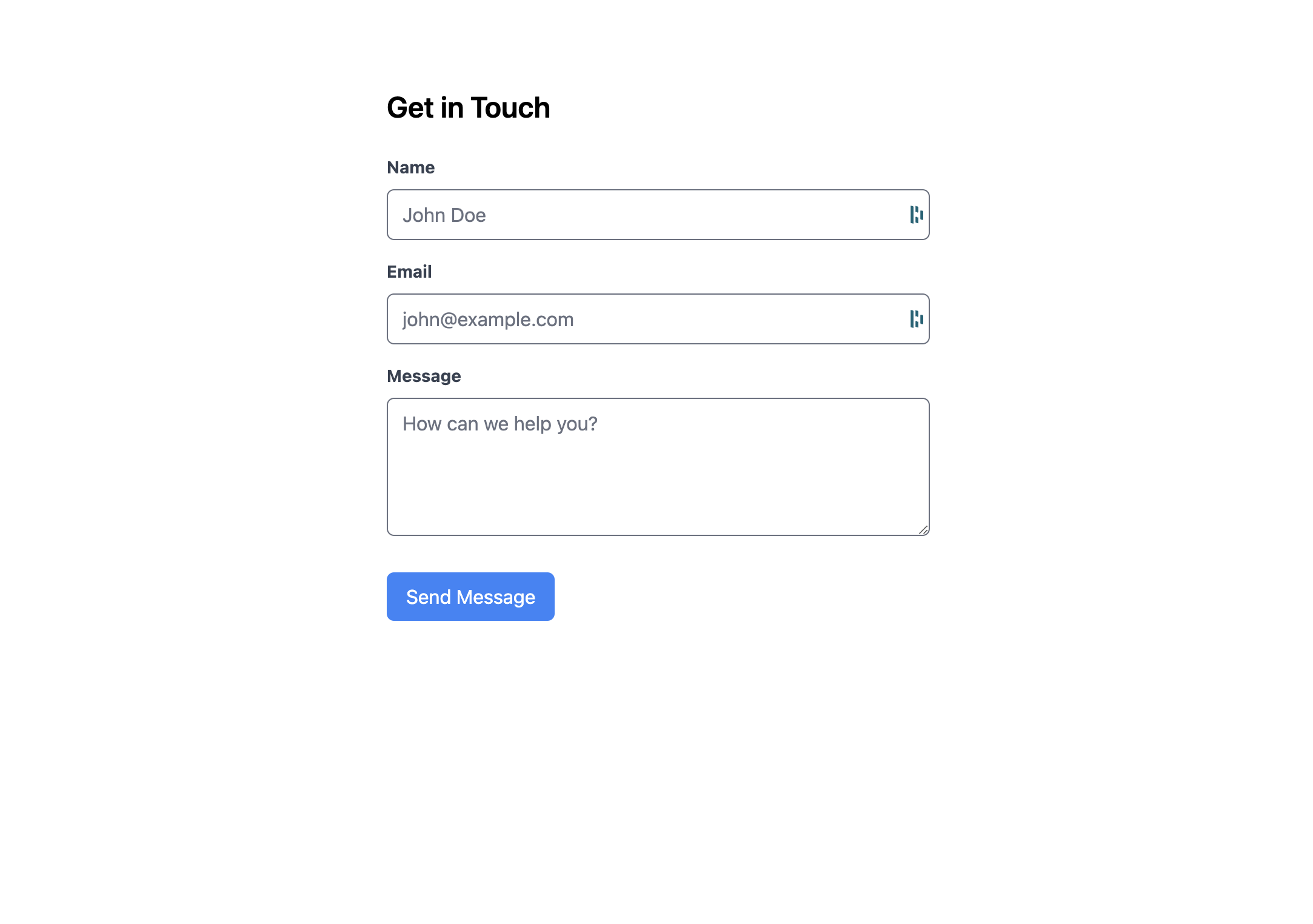What is Vue?
Vue is a JavaScript framework for building user interfaces. It builds on top of standard HTML, CSS, and JavaScript and provides a declarative and component-based programming model that helps you efficiently develop user interfaces, making it a great choice for building web applications.Prerequisites
Before you begin, you’ll need to have a Formbox form. If you don’t have one yet, you can create a new form by following the steps in the Introduction guide. Once you have your form, make a note of the form’s endpoint url in the setup tab of your form page, as you’ll need it later.Creating a new Vue project
To get up and running quickly, we will follow the official Vue Quick Start guide to create a new Vue project. In your terminal, run the following command:http://localhost:5173. You should see a new Vue application running.

Adding your Formbox form to your Vue project
Now that we have a new Vue project set up, let’s add our Formbox form to it. For styling purposes, we’ll use Tailwind CSS. You can learn how to add Tailwind CSS to your project by following the Vue installation guide. Once you have Tailwind CSS set up, let’s add our form. Open up theApp.vue file within the src directory and replace everything in the file with the following code block:
App.vue
action attribute as shown in the code block above.
Save the file and navigate to http://localhost:5173 in your browser. You should see a form that you can fill out and submit.



